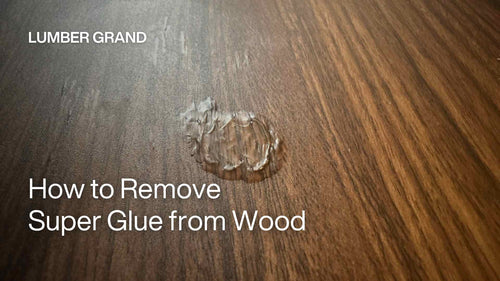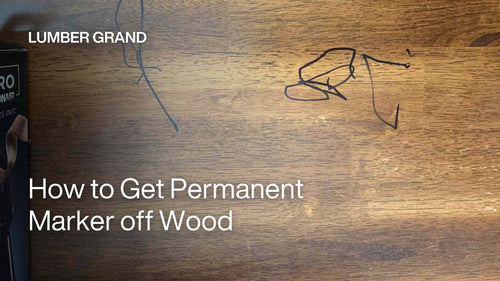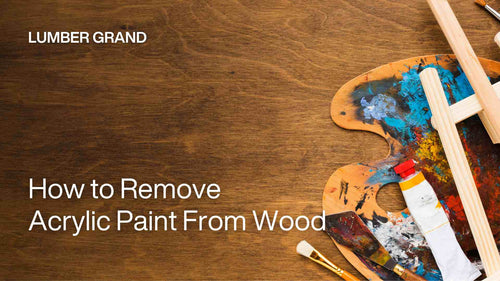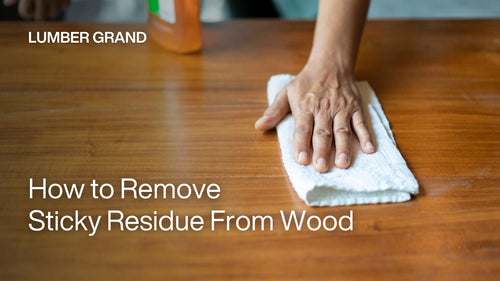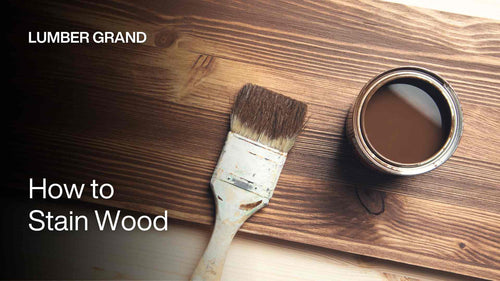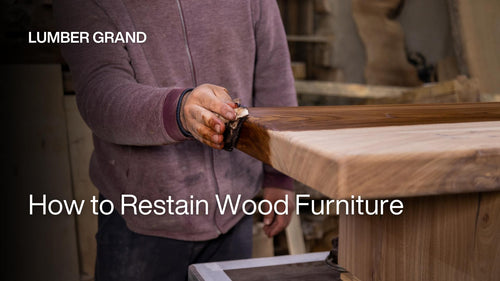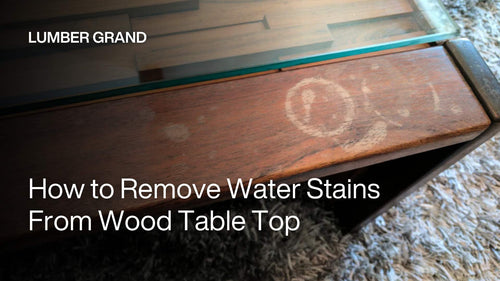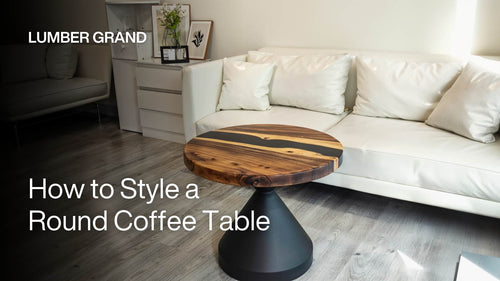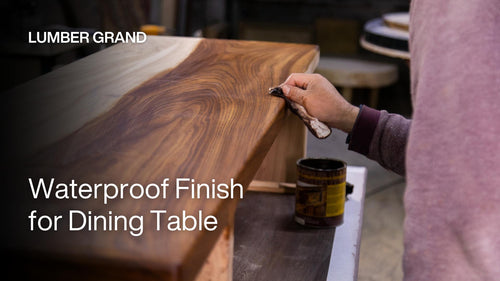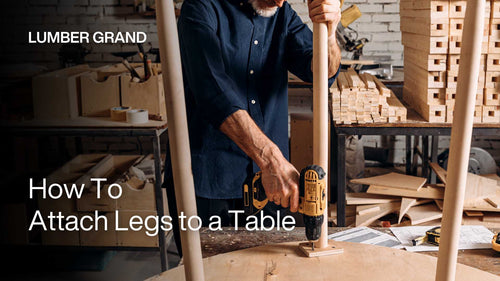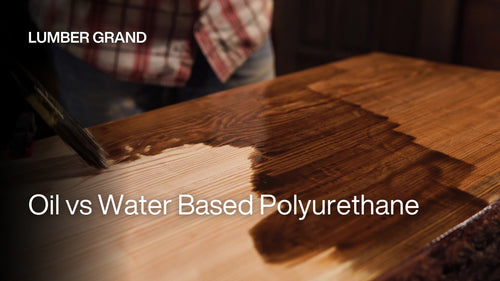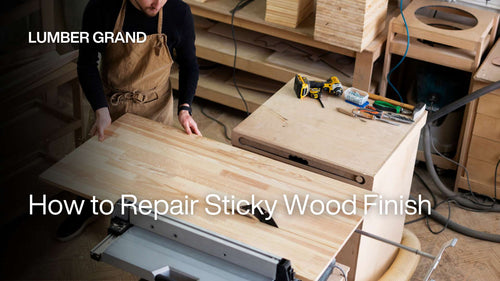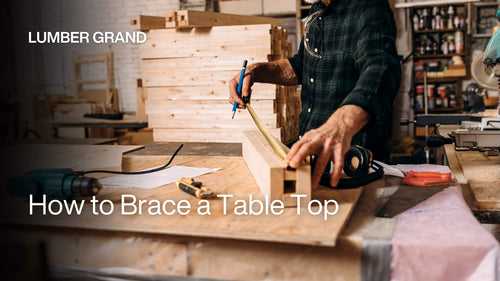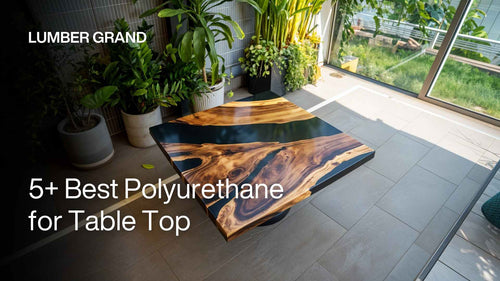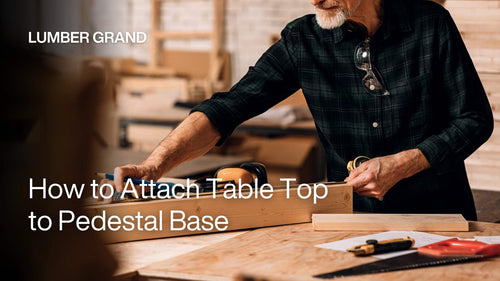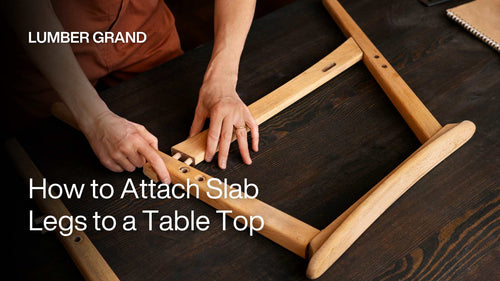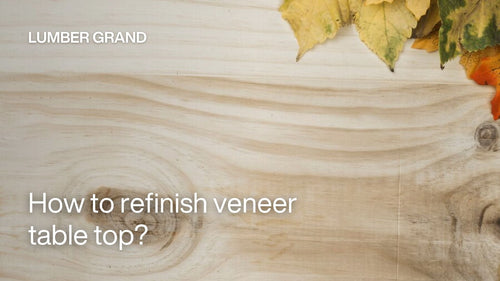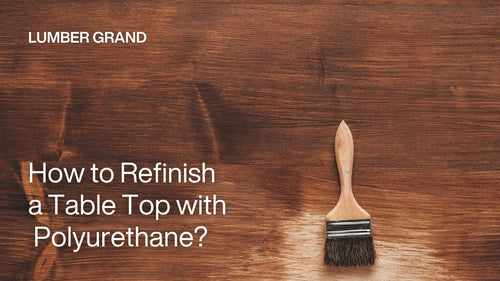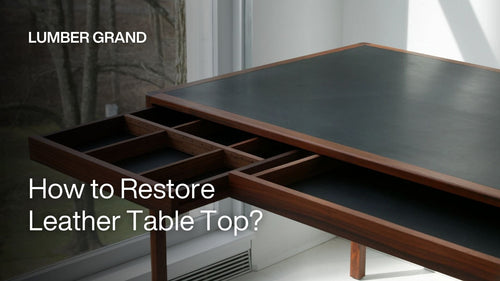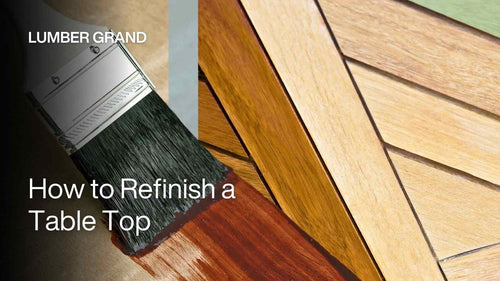How to make an epoxy table? Epoxy tables have been in demand as DIY choices lately due to their mesmerizing designs and durability. With a bit of planning, the materials one requires to make an exquisite epoxy table are readily available to be used at home.
4 Different Types of Epoxy Tables You Can Make
First things first, let’s decide what kind of epoxy table you want to build. This knowledge helps you figure out what to buy at the store and whether you're getting into something simple or complicated.
1. Types of Epoxy Tables Popularly Used
Searching on Google, you can easily find 3 popular types of epoxy tables:
-
River epoxy table: Using epoxy to fill and pour in between two wooden slabs resembles a river flowing through the wood. This type is popular when learning how to make an epoxy table for a more organic, nature-inspired design.
-
Waterfall epoxy table: Waterfall epoxy table has a special design with epoxy flowing from the surface down the edges, creating a waterfall effect. This type of table often uses natural wood with cracks, gaps, and epoxy is poured in to shape, bringing a modern, sophisticated and impressive beauty.
-
Colorful epoxy tables: They are designed and made up of different color mixes to customize a look.
 Refer to our epoxy table
Refer to our epoxy table
Photo: Lumber Grand
Shop now: Epoxy Resin Table Top 19 Inches
2. Epoxy Color Options
To make the project special, you can use any color you want. However, there are 3 types of colors that make your table top brighter and more luxurious:
-
Transparent: Creates a sophisticated, clean look.
-
Blue: Brings a cool, pleasant feeling.
-
Copper: Classic color, suitable for luxurious spaces.
3. Necessary Materials
How to make an epoxy table at home easily with the following 3 main materials:
-
Wood: You can use any type of wood you want. However, the popular woods we are currently favoring are Walnut, Maple, Cherry, Oak, Mahogany and Teak.
-
Epoxy: Choose high-quality epoxy, ensuring durability and ease of construction.
-
Additives: You can use dyes, metal powders or glowing additives to highlight the table.
4. Required Tools
You need to prepare the following equipment to successfully make an epoxy table:
-
Cutting tools, grinding machines, casting molds and sanding machines.
-
Epoxy stir stick, measuring tape, gloves, protective masks.
How to Make an Epoxy Table: A Step-by-Step Guide
With your materials ready, you can begin to create an epoxy coffee table. The step-by-step guide below will show you how to make an epoxy table that is stunning and long lasting table.
1. Step 1: Measure and Cut the Wood Slabs
First of all, the best wood for epoxy table should be cut precisely to smoothen the next steps when you make an epoxy table. Measure the size that your space requires. Then use a wood cutting machine to prepare correctly sized wood slabs.
Pay attention to checking the wood surface, and remove any cracks or defects that may affect the later quality of the table. Finally, clean the wood surface with a soft cloth after cutting to ensure good gluing with the epoxy.
 Prepare the wood and cut to size
Prepare the wood and cut to size
Photo: ©inside-studio on Canva.com
2. Step 2: Prepare the Epoxy
Second, pre-cure the epoxy using the best table top epoxy according to the manufacturer's instructions, ensuring the correct ratio of resin and hardener, usually a 2:1 ratio. For a detailed epoxy table how to, follow the guidelines carefully to ensure optimal results.
It won't cure fully if the mixture is incorrect, as a greasy surface can form due to an improper mix. Stir gently to prevent air bubbles, which may affect the smoothness of the surface later.
 Prepare the epoxy
Prepare the epoxy
Photo: ©BAKHROM on Canva.com
3. Step 3: Pour the First Layer
Once thoroughly mixed, the epoxy is ready to be poured into the mold you prepared. Whether it is a regular epoxy table or epoxy end table, you do the same thing. Pouring should be slow and uniform to prevent air bubbles from entrapping within the epoxy. If air bubbles are seen, you can use a heat gun to draw them out.
It is important to be patient and let this layer of epoxy harden completely and dry completely before forging ahead to the next step. For guidance, check out how to make an epoxy table resources to ensure you're following the right techniques.
 Apply the first coat of epoxy paint
Apply the first coat of epoxy paint
Photo: ©BAKHROM on Canva.com
4. Step 4: Pour the Second Epoxy Layer
With this layer, thickness and smoothness shall be accomplished for the table. Pour with gentle and even strokes to achieve a smooth surface.
 Apply the second coat of epoxy paint
Apply the second coat of epoxy paint
Photo: ©BAKHROM on Canva.com
5. Step 5: Sanding and Finishing
After the second epoxy layer is completely dry, we proceed to sand the surface again. Be patient at this step; start sanding with the least coarse sandpaper to fine to achieve the highest gloss surface.
 Sanding and finishing
Sanding and finishing
Photo: ©Stipe Perkovic on Canva.com
6. Step 6: Attaching the Table Legs
Choose the table legs design you like, as long as it meets the criteria for stability and compatibility with the table top. We recommend steel table bases because they are suitable for long term use. After selecting the table legs, fix them on the table and check if they are wobbly. If it wobbles, supplement with glue or screws as necessary.
 Attaching the Table Legs
Attaching the Table Legs
Photo: ©Krimkate on Canva.com
Common Mistakes How to Avoid Them
How to make an epoxy table at home for beginners or non-professionals may make some common mistakes. Knowing these 4 mistakes can help speed up your epoxy table making process significantly.
-
Improper mixing of epoxy: If you do not mix the epoxy according to the recommended ratio, the surface may not cure completely or become sticky due to uneven drying. Follow the manufacturer's recommendation for mixing the ratios always. It is usually a 2:1 ratio of base/hardener.
-
The first coat of epoxy is not dry enough: For the next coat of epoxy to adhere firmly, you need to wait for the first coat to dry completely before applying the second coat.
-
No removal of air bubbles: This is a problem that almost every professional woodworker or DIYer encounters. Small air bubbles can affect the final look of your project. Heat gun shall be used in removing them right after appearance.
-
Improperly prepping wood: Wood needs to be thoroughly treated before epoxy is poured. Otherwise, it will not absorb the epoxy equally, and resulting in an uneven surface which probably includes defects like air bubbles, cracks, or peeling, brings about the quality and aesthetics of the table in the end. So what is the right way?
 Common mistakes when you make an epoxy table
Common mistakes when you make an epoxy table
Photo: Lumber Grand
Shop now: Round Epoxy River Table Top 29 Inches
Before pouring epoxy, the wood needs to be dried to a moisture content below 12% to avoid shrinkage, cracking or making the epoxy not adhere firmly. The surface of the wood should be sanded with 80-120 grit sandpaper and wiped with a dry cloth or isopropyl alcohol for the removal of impurities which will help the epoxy to have an even bond.
If the wood has holes or cracks, it should be sealed with epoxy glue to prevent leakage and reduce air bubbles. For porous wood, a thin layer of epoxy should be applied first to seal the surface and increase the adhesion of the main epoxy layer.
Epoxy Table Cost: What You Need to Know
When you decide to make an epoxy table at home, cost is an important factor that you need to carefully calculate. The cost of an epoxy table can differ widely due to various considerations: size, type of wood, quality of epoxy, and complexity of its design. Below are the cost we have listed, you can refer to:
-
Small, Simple Epoxy Table: Simple, small tables have lengths under 90 cm, and a width of about 40-60 cm. It can vary in price between $200-$350.
-
Medium Epoxy Table: Generally, medium-sized tables and standard designs range in price from $450 to $700.
-
Large, Specially Designed Epoxy Table: In the case of large tables or those with unusual designs, such tables might cost upwards of $1,000 and beyond.
-
High End Epoxy Tables, River Tables: Such luxury epoxy tables with a special design river can cost up to a few thousand dollars and range from $2,000-$5,000 and beyond depending on the complexity of the design and size.
Discover Handcrafted Epoxy Table Top - Perfect for dining tables, countertops & statement furniture.
If you need more advice or help while making the table, feel free to email us at contact@lumbergrand.com. Or you can contact us to buy the product at a reasonable price.
In this article, we have guided you to learn how to make an epoxy table at home. For beginners, it will be a bit difficult, but if you persevere, you will be able to do it. Prepare and take notes of each step, from preparing the wood, and mixing the epoxy, to assembling the table legs, so that your table can become a perfect masterpiece.









